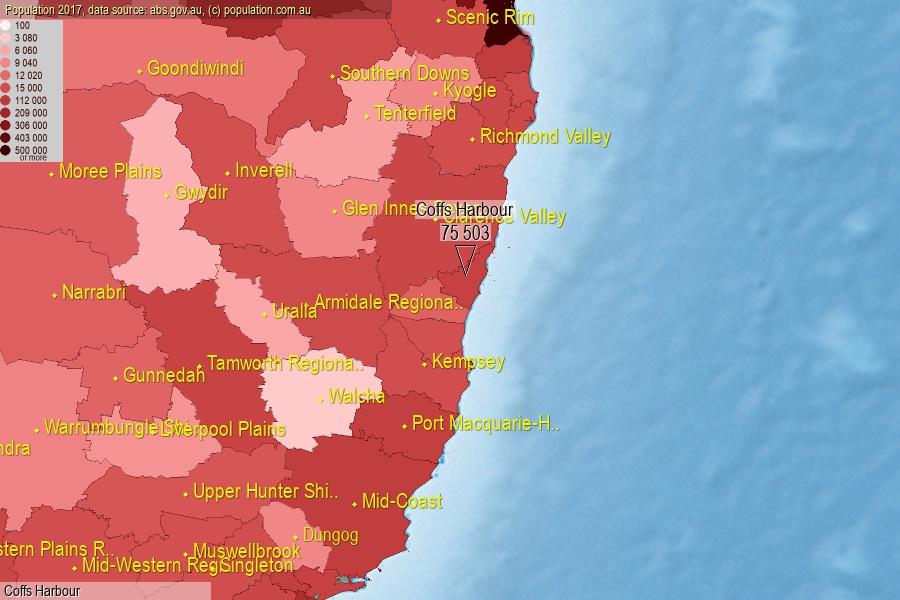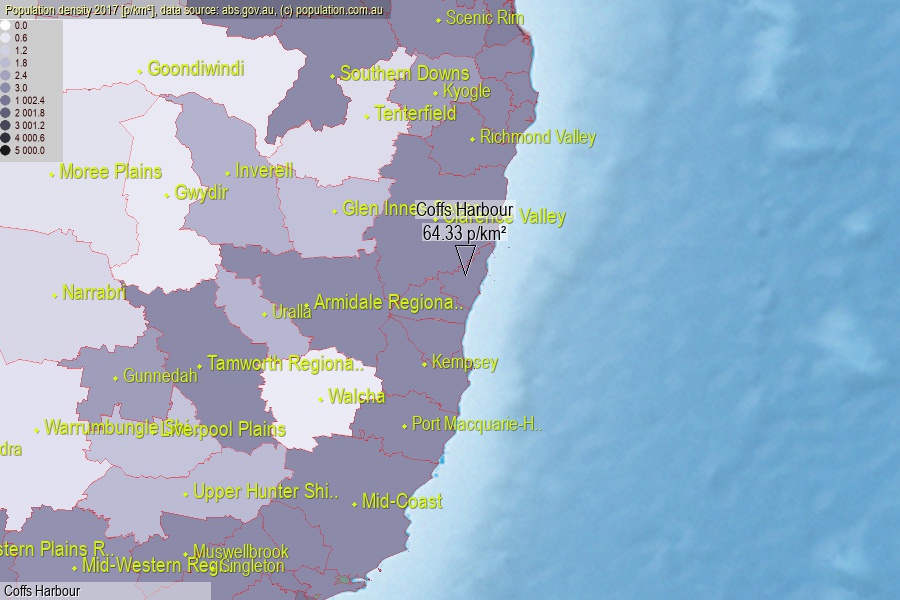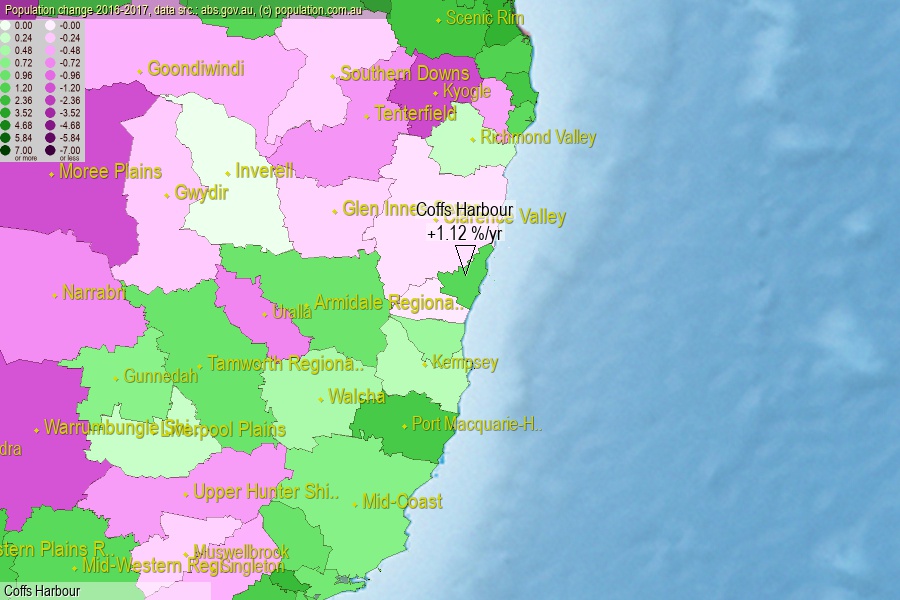 population.com.au
population.com.auLast official estimated population of Coffs Harbour City (as Local Government Area) was 75 503 people (on 2017-06-30)[2]. This was 0.30% of total Australian population and 0.949% of NSW population. Area of Coffs Harbour is 1 173.70 km², in this year population density was 64.33 p/km² . If population growth rate would be same as in period 2016-2017 (+1.12%/yr), Coffs Harbour population in 2025 would be 82 510. [0]



Click to enlarge. Coffs Harbour is located in the center of the images.
Population [people], population density [p./km²] and population change [%/year] [2]
[1996-2001] +1.36 %/Y
[2001-2002] +1.55 %/Y
[2002-2003] +1.61 %/Y
[2003-2004] +1.35 %/Y
[2004-2005] +0.78 %/Y
[2005-2006] +1.06 %/Y
[2006-2007] +1.37 %/Y
[2007-2008] +1.49 %/Y
[2008-2009] +1.14 %/Y
[2009-2010] +1.46 %/Y
[2010-2011] +0.85 %/Y
[2011-2012] +0.83 %/Y
[2012-2013] +1.03 %/Y
[2013-2014] +0.99 %/Y
[2014-2015] +0.99 %/Y
[2015-2016] +1.26 %/Y
[2016-2017] +1.12 %/Y
[0] Calculated with linear interpolation from officially estimated population
[1] Read more about LGA and Australian Statistical Geography Standard (ASGS) on abs.gov.au
[2] Population data from Australian Bureau of Statistics (Population and density: 2017; change: 2016-2017)
[3] Digital Boundaries: Australian Statistical Geography Standard (ASGS) 2016.